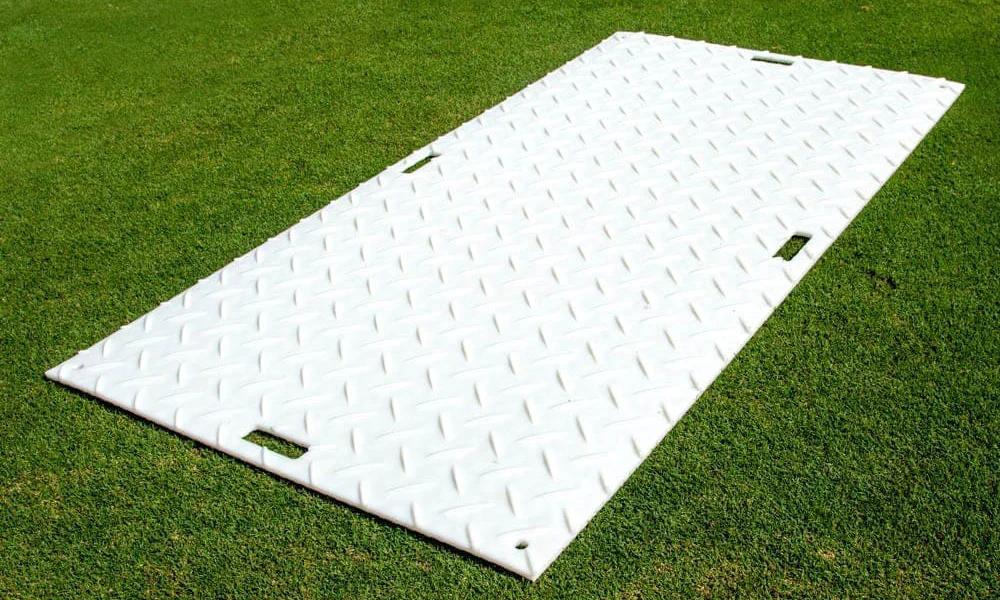Before starting any project involving large machinery or heavy foot traffic, it’s crucial to ensure surface safety. Ground protection mats are essential for this purpose. They prevent soil compaction and help maintain the natural topography by providing solid surfaces for heavy equipment and personnel.
This comprehensive guide will assist you in selecting the ideal ground protection mats, ensuring the smooth and efficient completion of your projects.
The arious types of ground protection mats
Several varieties of ground protection mats exist. Each is made to fit a certain set of needs and circumstances. Understanding these types is important to make an informed choice:
Composite mats
Composite mats are strong and flexible due to their unique material composition. They are ideal for industrial and construction applications, as they can withstand harsh environments and heavy loads. Additionally, their lightweight design allows for easy installation and transportation, making them a practical choice for various projects.
HDPE mats
High-density polyethylene (HDPE) mats are popular for their weather and chemical resistance, durability, and low weight. They are handy for outdoor festivals, landscaping initiatives, and building sites. These mats offer a firm surface and are durable enough to support heavy equipment without breaking.
The crucial qualities to consider in ground protection mats
It’s crucial to take into account the following characteristics while choosing ground protection mats:
Surface traction
Non-slip surfaces are essential for safety in rainy or muddy circumstances. Traction-efficient mats increase stability and reduce the risk of accidents.
Load bearing capacity
The mats’ load-bearing capacity refers to their ability to withstand the weight of any vehicles or machinery utilized on the premises. This is particularly important for building projects that use large machinery.
Portability
Convenient and lightweight mats are simpler to move and set up at various locations, offering flexibility.
Installation ease
Installing and removing mats easily can save labor expenses and time spent on the job, increasing project efficiency.
Sturdiness
Choose mats with a high level of durability that can tolerate rough handling and frequent use. This kind of durability guarantees long-term performance and cost-effectiveness.
Evaluate the needs and demands of your project.
The specific needs of each project determine the ideal ground protection mats. Here’s how to determine demands that are unique to you:
- Activity type: Consider the activities that will be conducted on the mats. High load-bearing capacity mats are necessary for heavy machines, while excellent traction and cushioning may be required for foot traffic.
- Environmental conditions: Consider the site’s geography, weather, and soil type. This will assist in choosing the ideal mat design and material.
- Length of use: How long do you plan to use the mats? More robust and durable mats may be necessary for longer-term projects, while short-term projects might prioritize ease of installation and removal.
- Cost: Set a budget before purchasing your ground protection mats. Better mats may cost more upfront, but since they last longer and require less upkeep, they frequently offer better value over time.
The bottom line
Purchasing premium ground protection mats improves efficiency and safety on the job site while protecting the integrity of the ground.

